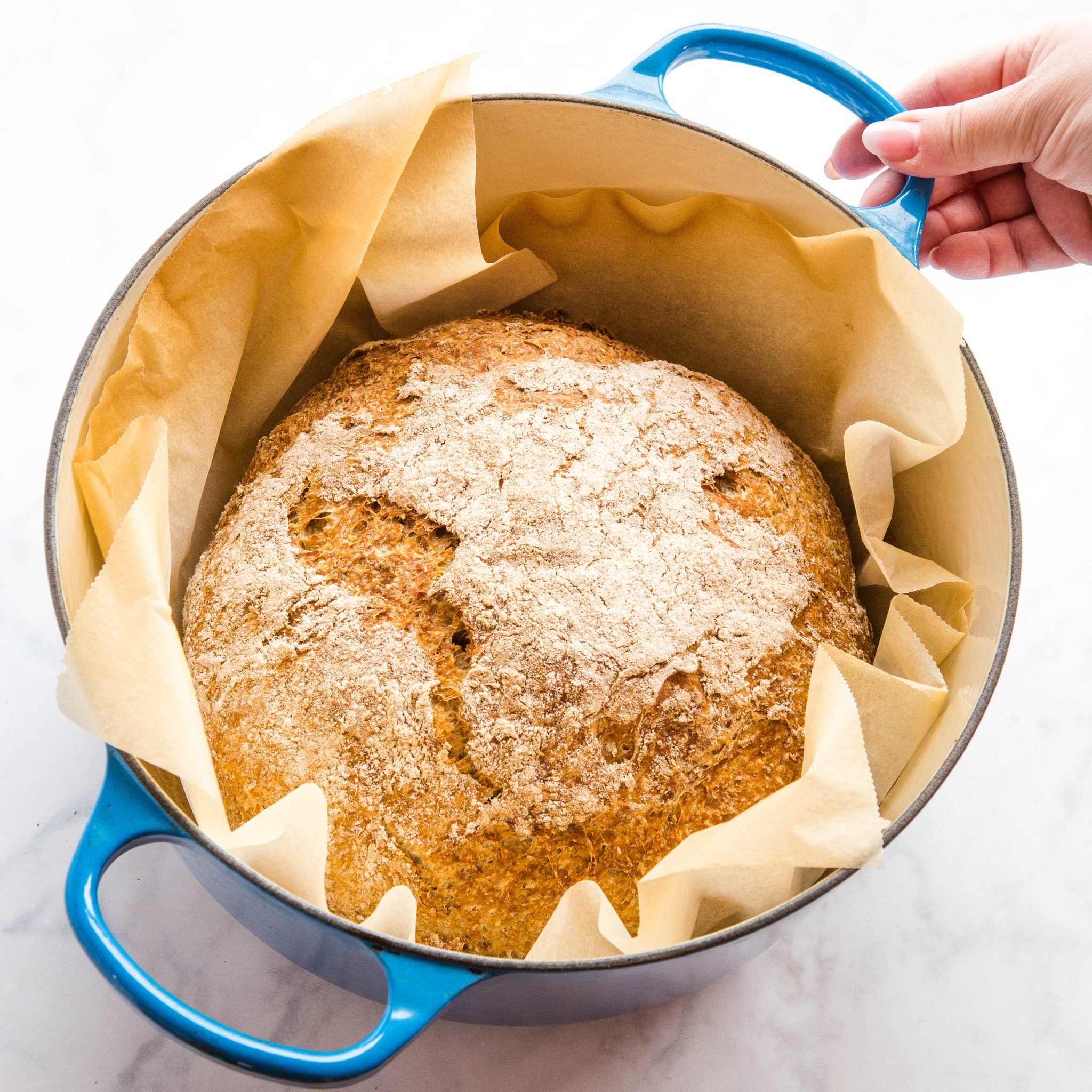No Knead Whole Wheat Bread
4.6
(9)
Your folders
Your folders
Prep Time: 10 minutes
Cook Time: 40 minutes
Total: 130 minutes
Servings: 14
Author : Chrissie

Ingredients
Export 3 ingredients for grocery delivery
Instructions
Step 1
Start with a large bowl and a wooden spoon, and add your flour to the bowl. Measure the yeast and add it to one side of the bowl. Measure the salt and add it to the other side.
Step 2
Using a wooden spoon, stir the yeast into the flour on its side of the bowl first and then stir the salt into the flour on its side of the bowl. This will prevent the salt mixing directly with the yeast. Give the whole mixture a few good stirs to make sure everything is combined.
Step 3
Measure the water. Make sure the water is at room temperature; water that is too warm or too cold can kill the yeast and prevent the bread from rising at all.
Step 4
Pour the water in and stir with a wooden spoon. The dough will be rough and a bit sticky, but that's normal.
Step 5
Stir until all the flour is combined. This is not normal bread dough (there's no kneading involved in this recipe), so you don't need to be too concerned about the appearance of the dough at this point. Just make sure the ingredients are combined well.
Step 6
Cover the bowl with plastic wrap. It's a good idea to ensure there's adequate space left in the bowl for the dough to at least double in size. Place the bowl in a warm, draft-free place and let it rise for about 1 and a half to 2 hours.
Step 7
After the dough has risen, preheat your oven to 450 degrees Fahrenheit. Place your Dutch oven with the lid on in the cold oven and let it heat up with the oven. If your dutch oven is black on the inside, set your oven to 425 degrees Fahrenheit instead of 450.
Step 8
Place a piece of parchment paper on the counter and dust it with flour. Rub flour on your hands and scrape the dough away from the sides of the bowl, gathering it in your hands as best you can (it may feel kind of strange and not at all like regular bread dough) and forming it into a circular loaf on the parchment paper. Don't worry if it still looks a little rough in places. This lends to the rustic look of this loaf.
Step 9
Once you have it shaped, the dough needs to undergo a short second rise. The goal is to handle the dough as little as possible at this stage because any amount of tugging at the rough can cause it to deflate after it has undergone its second rise. The next few steps will help prevent this. But don't worry if it deflates a bit. This bread dough is pretty forgiving.
Step 10
Sprinkle flour over the top of the loaf and loosely cover it with plastic wrap or a clean kitchen towel. The flour you sprinkle on top also prevents the plastic wrap or towel from sticking to the dough so when you take it off at the end of the rise, it doesn't disturb the dough and wreck the rustic shape you've created. Let the dough rise for about 30 minutes. Your oven will also be preheating during this time (and so will your pot).
Step 11
Remove the preheated pot from the oven and transfer the dough into the pot as carefully as possible by handling only the parchment paper. Place the lid on the pot and return it to the oven for 30 minutes. Don't open the oven during this time, and certainly don't take the lid off the pot; the crispness of the crust develops because of the steam that builds up in the pot during this 30 minutes.
Step 12
After 30 minutes have passed, remove the lid from the pot and continue baking for another 10 minutes. After the 10 minutes have passed, remove the pot with bread from the oven and place the bread on a wire rack to cool. You'll probably hear it crackling as it cools - this is normal.
Step 13
If you can, resist the urge to cut into the bread until it has pretty much cooled completely. The bread continues to bake on the inside even after it has been removed from the oven and cutting it too early could result in the inside becoming gummy or rubbery.